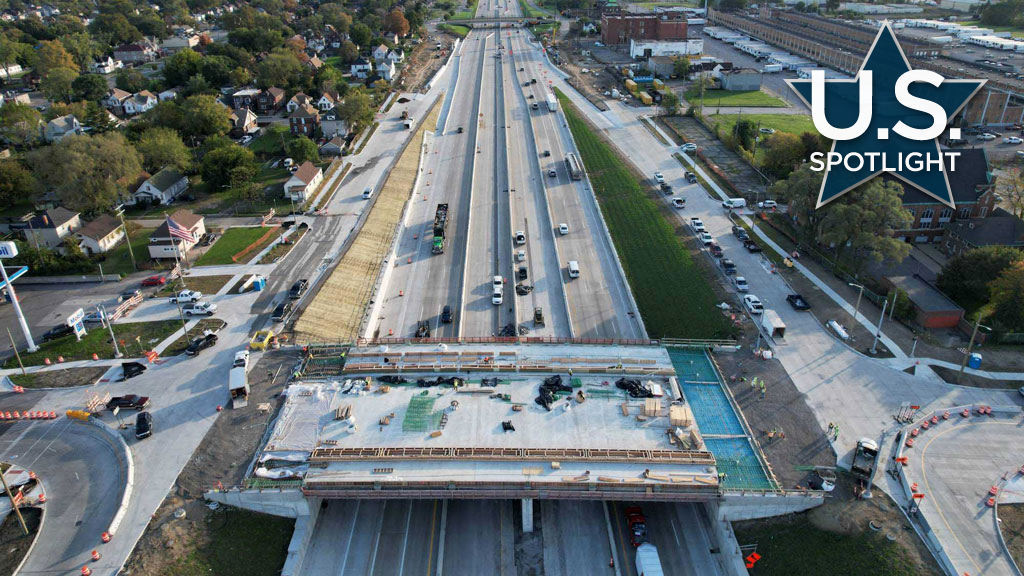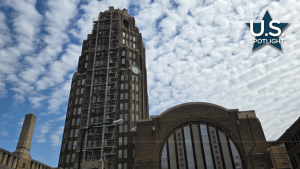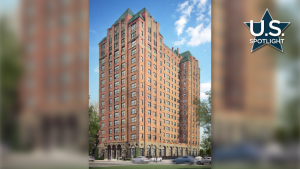While construction of the massive $5.7 billion Gordie Howe International Bridge’s (GHIB) main structure has garnered the most news coverage, there are several affiliated projects that are key to the new Detroit–Windsor crossing’s success.
One of these is the interchange connecting the future bridge to Interstate 75.
I-75 is the key Midwest U.S. artery between Michigan and Florida, well used by both Americans and Canadians as an auto parts supply line and vacationing Snowbirds heading to Florida.
While on the bridge’s Canadian side, Hwy. 401 has been extended via the Herb Gray Parkway to the foot of the new bridge, on the U.S. side no similar freeway extension exists.
Therefore, an almost 1,300-foot series of ramps from the new U.S. customs plaza to I-75 has to be constructed, necessitating a new overpass onto the freeway itself.
The interchange is located in both a heavy industrial and older residential community known as southwest Detroit, making the project more than an interchange.
The entire site — 1.8 miles — includes demolition and rebuilding of several I-75 street and pedestrian overpasses, local street improvements and associated work such as drainage culverts and noise walls, some of these the result of “community benefits” by the bridge company.
In fact, the project has four main phases, which began in fall 2021 and should wrap in fall 2024, when the bridge is still officially expected to open (though an analyst’s report suggested it might not open until August 2025 due to COVID delays).
These encompass over a dozen roadway and pedestrian bridges ranging in length from 100 to 1,700 feet between Springwells and Clark streets.
As well, due to community consultation, construction of the ramps is being done to “minimize the impact of interstate and international traffic on roads in the vicinity” of the nearby population, GHIB spokesperson Tara Carson said.
Once finished, the area will have access to four new road bridges and five pedestrian bridges, all ADA compliant and in accordance with the Complete Streets program including pedestrian walkways and planter boxes.
Moreover, extensive landscaping will take place in an area known for its grey mid-century industrial profile, including in the interchange, perimeter and within the customs or bridge Port of Entry (POE) itself.
“Low-maintenance native plant species that are salt-tolerant will be used near pavements and groundcover plants and materials will be selected for a variety of colour and texture to provide seasonal interest,” Carson said.
Significant progress has been made on the infrastructure itself with three street bridges now open to traffic and demolition of another completed.
Neighbourhood road reconstruction is also underway.
I-75 shoulder widening has also started.
As for the interchange and associated ramps, work has started between the freeway and POE with girder installations on two of the four two-lane ramps.
Carson said some of this work has been challenging given the narrow footprint.
“The new ramps are being constructed around and over existing roadways like the I-75 Interchange, the service drives, and Fort Street (a main truck thoroughfare), and require significant efforts to plan and manage traffic flow,” she said.
Accordingly, the bulk of activity takes place during the day. During the pounding of 420 piles vibration monitoring has been implemented for residents within 150 feet during what officials say is an “aggressive” schedule.
As well, noise walls are being constructed along three sections on the southbound side of the freeway adjacent to residences, benefiting a total of 155 households by lowering noise at least five decibels.
Residents voted on their installation.
The precast barriers range from 10 to 20 feet in height and are eight inches wide. Esthetic features are a limestone finish with alternating shades of gray.
The only other problems were some isolated weather resulted in resequencing concrete pours and crane activity. In some instances, the construction consortium “installed erosion protection measures and had large water pumps on standby to divert any excessive rainwater,” Carson said.
Work is being carried out by the same design-build-maintenance construction consortium hired for the overall project: Bridging North America. Key firms are ACS Infrastructure Canada Inc., Fluor Canada Ltd. and Dragados Canada Inc.
But, once finished, the interchange itself will be maintained by the Michigan Department of Transportation.











Recent Comments